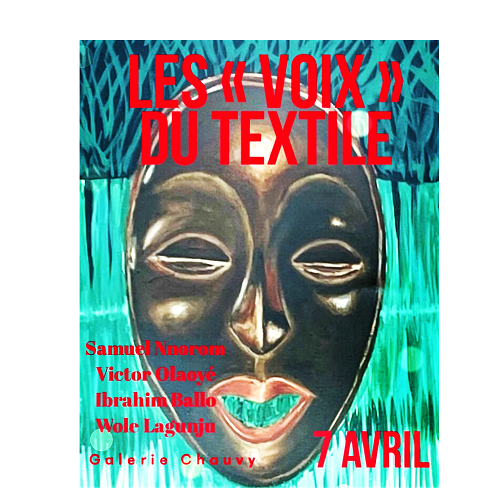
–
VICTOR OLAOYE PROPOSE UNE RÉFLEXION SUR LE TEMPS ET LA TRANSMISSION, RECONTEXTUALISANT LES INFLUENCES SOCIO-CULTURELLES DE SA CULTURE YORUBA. SES FIGURES, COMME SAISIES DANS UN TEMPS SUSPENDU, SONT MISES EN RELATION AVEC DES OBJETS TRADITIONNELS À VALEUR ARCHÉOLOGIQUE QUI SUGGÈRE UNE ÉTRANGE TEMPORALITÉ ET INSCRIT SON OEUVRE DANS LE TEMPS LONG OFFRANT DE NOUVELLES PERSPECTIVES IMAGINATIVES.
Dans ses oeuvres, Victor Olaoye suscite un nouveau regard sur ses thèmes de prédilection qui prennent leurs sources dans les rites ancestraux.
Les jumeaux Kehinde et Taitwo, évoquent l’importance fondamentale que les Yorubas accordent aux naissances gémellaires. Le culte introduit par les vagues d’esclaves déportées dès le XVIIIe siècle est soutenu par la présence sacrée des statuettes Ibeji, la coiffure en cimier que présente Kehinde.
Two faces of the same coin, deux figures identiques ou une en deux exemplaires ! vraies jumelles prises dans un système d’écho sont pourtant fermement distinctes par les variations qui s’incarnent dans les motifs textiles. De ce matériau elles informent.
Les épisodes historiques et légendaires de tradition orale des contes africains invitent à la récréation les villageois de Wooven together qui en seront les conservateurs et le relais.
Les carrés de tissu jetés sur l’épaule des figures masculines de We are looking afar et de The gathering of brothers pourraient faire référence aux cérémonies impériales de l’antiquité si ce n’étaient les motifs du textile Adire qui renseignent sur l’univers culturel de l’artiste.
Une seule ligne pourrait faire le contour des Trois frères, tant l’artiste les a représenté soudés, au premier plan, renforçant leur harmonie affichée par le style vestimentaire uniforme et la dimension collective de l’aso-ebi (du mot Yoruba Aso tissu, et Ebi, famille), qui marque les liens fraternels, renforce l’identité et la solidarité familiale .
Riche de motifs graphiques infiniment inventifs que se transmettent de mère en fille les femmes Yoruba, le textile Adire raconte la longue histoire coloniale.
Victor Olaoye offers a reflection on time and transmission, recontextualizing the socio-cultural influences of his yoruba heritage. His figures, caught in a state of suspended time, dialogue with traditional sculptures archaeological s suggesting a strange temporality that anchors his work in deep time and opens up new imaginative perspectives.
Kehinde and Taiwo embody the revered status of twin births in Yoruba culture, a belief carried across continents by enslaved Africans as early as the 18th century. This reverence is reflected in the sacred Ibeji figurines, subtly echoed in Kehinde’s distinctive crest-like hairstyle, which serves as a visual nod to this spiritual legacy.
The twins are depicted as two faces of the same coin—seemingly identical yet uniquely individual. Their distinctiveness emerges through variations in the intricate textile patterns adorning them, which act as storytelling devices.
In Woven Together, these fabrics breathe life into African folktales and oral histories, transforming the villagers into both guardians and narrators of this rich cultural heritage. n works like We Are Looking Afar and The Gathering of Brothers, the draped cloth squares over the shoulders of male figures as in the imperial ceremonies of ancient times. However, the Adire textile motifs—characterized by their indigo-dyed patterns—anchor these pieces in Olaoye’s Yoruba cultural world, as a living tradition.
The Three Brothers emphasizes as unity and familial bonds through a single, continuous line that tightly interweaves the figures in the foreground. Their uniform attire reflects the Yoruba tradition of aso-ebi (from aso, meaning cloth, and ebi, meaning family), a practice that reinforces fraternal solidarity and collective identity, binding the brothers as one while celebrating their shared heritage.
Rich in infinitely inventive graphic motifs passed down from mother to daughter, Adire textiles tell the long and complex story of colonial history.
Rejoignez notre liste de diffusion pour recevoir les expositions de la galerie, les avants premiers des projets, les mises à jour sur nos artistes, nos événements.
Galerie Chauvy © 2024, Tout droits reservés –Cookies – Mentions légales – Création Pontonweb